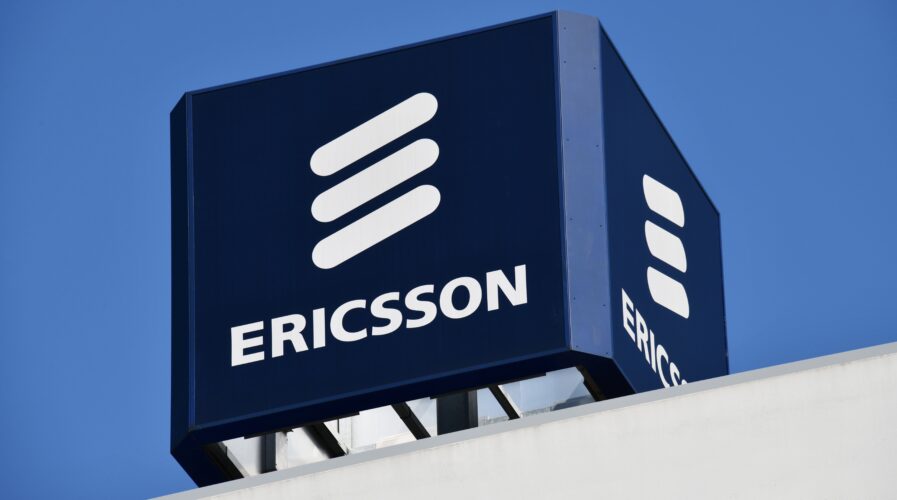
(Source – Shutterstock)
Ericsson Mobility report: 5G subscriptions in SEA, Ocenia will surpass half a billion by 2027
- Globally, 5G mobile subscriptions are anticipated to surpass one billion and 4.4 billion by the end of 2022 and 2027, respectively.
- Ericsson Mobility report highlighted that 5G is scaling faster than any previous mobile generation, with subscriptions hitting over 15 million at the end of 2021 in SEA and Oceania.
- There are about 15 commercial 5G mobile networks in the SEA and Oceania region.
The fifth-generation (5G) network has so far taken the world by storm. It is not merely about the speed of communication, but 5G even has the ability to power transformative tech, opening an abundance of unprecedented opportunities especially for businesses in the manufacturing sector. With commercialization hardly reaching three years, 5G is already scaling faster than any previous mobile generation, according to the latest Ericsson Mobility report.
The Swedish telecommunication giant in its 2022 Mobility report predicted that by the end of this year, 5G mobile subscriptions globally are anticipated to surpass one billion and by 2027, a staggering 4.4 billion. To top it off, within the first quarter of this year, global 5G subscriptions grew by 70 million, which means in five years, based on the forecast of the Ericsson Mobility report, 5G will become the dominant mobile access technology by subscriptions, making up for 48% of all mobile subscriptions around the world.
Interestingly, the one billion projection–if eventuate–would be a milestone according to Ericsson, as it would be two years sooner than 4G. “Key factors include the timely availability of devices from vendors, with prices falling faster than for 4G, as well as China’s large, early 5G deployments,” Ericsson Mobility report noted.
So far, at the end of 2021, over 20 service providers have launched public 5G standalone networks around the world, and this number, based on Ericsson’s forecast, is expected to double this year.
A strong growth in SEA, Oceania
By the end of last year, within Southeast Asia (11 countries) and Oceania (14 countries) alone, subscriptions had surpassed 15 million. The Ericsson Mobility report even forecasted that both regions would see more than 570 million subscribers by the end of 2027, with additional network deployments taking place over the next few years.
At this point, the Ericsson Mobility report also stated that there are about 15 commercial 5G mobile networks in the SEA and Oceania region, including in Australia, Singapore, New Zealand, Thailand, Indonesia, Malaysia and the Philippines. For context, trials have also commenced in several countries including Cambodia, Sri Lanka and Vietnam, highlighting the strong 5G momentum in the region.
In addition to mobile services, service providers in Australia, Indonesia and the Philippines have also launched 5G FWA services. “Continuous network modernization and coverage build-out have led several hundred million people to become new mobile broadband subscribers. Deployment of 5G standalone networks is also picking pace as communications service providers prepare innovation to address the business opportunities beyond enhanced mobile broadband,” it added.
The Ericsson Mobility report also highlighted that mobile data traffic per smartphone is expected to exceed global average in SEA and Oceania. “In SEA and Oceania, mobile data traffic per smartphone is expected to grow from 9.4GB per month to around 45GB per month in 2027 – recording the highest CAGR growth (30%) globally between 2021 and 2027,” the report stated.
The forecast is also higher than the estimated global average (40GB) in 2027, Ericsson added. Within SEA, India has witnessed tremendous growth with current average data traffic per smartphone being second highest globally (20GB). The report projects India to surpass around 50GB per month in 2027 – a 16% CAGR between 2021 and 2027.
Overall, between 2021 and 2027, total mobile data traffic in SEA and Oceania is expected to grow by a factor of around six, and that will be mainly driven by continued strong growth in 4G subscriptions and increasing 5G subscription uptake in several markets, Ericsson said.
As for 4G, the most commonly used network over the last 13 years or more, the Ericsson Mobility report indicated that subscriptions continue to increase, growing by 70 million during the first quarter of 2022 to around 4.9 billion. “The technology is projected to peak at 5 billion this year, then decline to around 3.5 billion by the end of 2027 as subscribers migrate to 5G,” the Swedish telecom giant said.
READ MORE
- The criticality of endpoint management in cybersecurity and operations
- Ethical AI: The renewed importance of safeguarding data and customer privacy in Generative AI applications
- How Japan balances AI-driven opportunities with cybersecurity needs
- Deploying SASE: Benchmarking your approach
- Insurance everywhere all at once: the digital transformation of the APAC insurance industry


